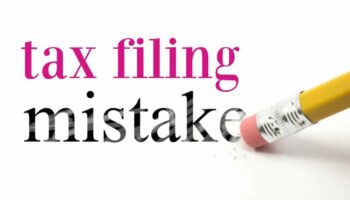Clarifying the differences between CPP and OAS for Canadians nearing retirement
For many Canadians nearing retirement age and those considering their options for the best time to take retirement benefits, they don’t understand the difference between the CPP and OAS. In this article, I will clear the confusion and clarify the differences between these two popular benefits for Canadian Pensioners.
Overview and Definitions
The Canada Pension Plan (CPP) retirement pension is a monthly, taxable benefit that replaces part of your income when you retire. If you qualify, you’ll receive the CPP retirement pension for the rest of your life. To qualify you must:
- be at least 60 years old
- have made at least one valid contribution to the CPP
Valid contributions can be either from work you did in Canada or as the result of receiving credits from a former spouse or former common-law partner at the end of the relationship.
CPP payments are not automatic. You must apply in advance of when you want the pension to start in order to receive payment.
One important point to note is that the CPP is not a government benefit and it is not funded by the government. CPP is a defined benefit pension plan, funded by employees and their employers.
The funds are managed by the CPP Investment Board. The CPP Investment Board was established by an Act of Parliament in December 1997. The board is accountable to Parliament and to federal and provincial ministers who serve as the CPP stewards. However, the board is governed and managed independently from the CPP itself and operates at arm’s length from governments.
The Old Age Security (OAS) program is the Government of Canada’s largest pension program. It is funded out of the general tax revenues of the Government of Canada. This means that you do not pay into it directly.
The OAS pension is a monthly payment available to seniors aged 65 and older who meet the Canadian legal status and residence requirements. You may need to apply to receive it.
Pension amount
CPP
The amount you receive each month is based on your average earnings throughout your working life, your contributions to the CPP, and the age you decide to start your CPP retirement pension. Your contributions to the CPP are based on your earnings.
The standard age to start the pension is 65. However, you can start receiving it as early as age 60 or as late as age 70.
If you start receiving your pension earlier, the monthly amount you’ll receive will be smaller. If you decide to start later, you’ll receive a larger monthly amount. There’s no benefit to wait after age 70 to start receiving the pension. The maximum monthly amount you can receive is reached when you turn 70.
For 2019, the maximum monthly amount you could receive as a new recipient starting the pension at age 65 is $1,154.58. The average monthly amount is $679.16. Your situation will determine how much you’ll receive up to the maximum.
OAS
The amount of your Old Age Security (OAS) pension will be determined by how long you have lived in Canada after the age of 18. If you were a resident of Canada for 40 years between the age of 18 and 65, you will get the maximum OAS amount.
OAS benefits are adjusted quarterly (in January, April, July, and October) if there are increases in the cost of living as measured by the Consumer Price Index.
The maximum OAS benefit in 2020 is $613.53 per month.
Age of eligibility
As discussed earlier, the standard age to start the pension is 65. However, you can start receiving it as early as age 60 or as late as age 70.
OAS is a benefit available at age 65. You cannot collect OAS any early and new rules now allow for the voluntary deferral of OAS to as late as age 70.
Note that your employment history is not a factor in determining eligibility for OAS: you can receive the Old Age Security (OAS) pension even if you have never worked or are still working.
If you are living in Canada, you must:
- be 65 years old or older
- be a Canadian citizen or a legal resident at the time we approve your OAS pension application, and
- have resided in Canada for at least 10 years since the age of 18
Clawback
With the CPP, there is no clawback. Clawback only applies to OAS.
The OAS clawback means that if you earn more than the maximum annual income allowed for a given year, you will have to repay part of or their entire OAS pension. The income threshold for 2019 is $77,580.
Survivorship
When a pensioner dies, the CPP will make the pension benefit payment to the surviving spouse. The surviving spouse must apply (it is not automatic) and the maximum combined CPP pension (personal CPP plus CPP survivor) cannot exceed the annual maximum benefit.
There are no provisions for OAS to continue to any after death. OAS ends when the pensioner dies.
Adequacy of pension funding
According to the CPP Investment Board, the CPP appears to be well funded.
Every three years, the Office of the Chief Actuary of Canada conducts an independent review of the sustainability of the CPP over the next 75 years.
In December 2019, the Office of the Chief Actuary reaffirmed through its latest triennial review that each part of the CPP remains sustainable at the legislated contribution rates throughout the 75-year period of her report (i.e., until 2095), based on actuarially accepted assumptions.
As of March 31, 2020, the Fund’s 10-year net nominal annualized return of 9.9% (or 8.1% on a net real return basis) is comfortably above the Chief Actuary’s assumption over this period.
OAS is funded by tax dollars. According to government reports, OAS is costing the government $36.5 billion dollars. The government predicts that the cost to fund Old Age Security will triple to $108 billion by 2030. OAS may be subject to changes in the future as this is not independently governed like the CPP.
Final Thoughts
Now you know the difference between these two benefits.
If you’re considering retiring, ensure you do some planning to maximize your benefits from these programs.
P.S. Do you know I have a new book that can help you accelerate your wealth in a tax-efficient way? Check out my new book, Tax-Efficient Wealth, to learn how you can build wealth quickly using strategies that will save you a ton in taxes.






